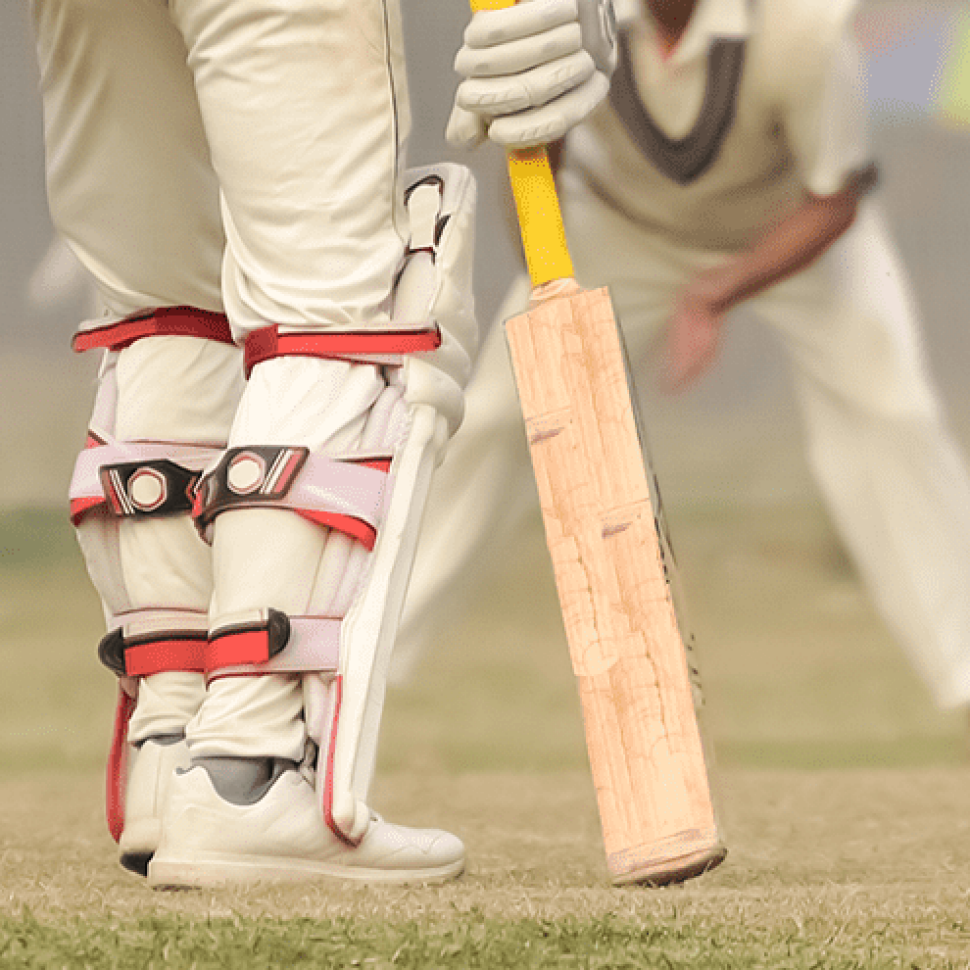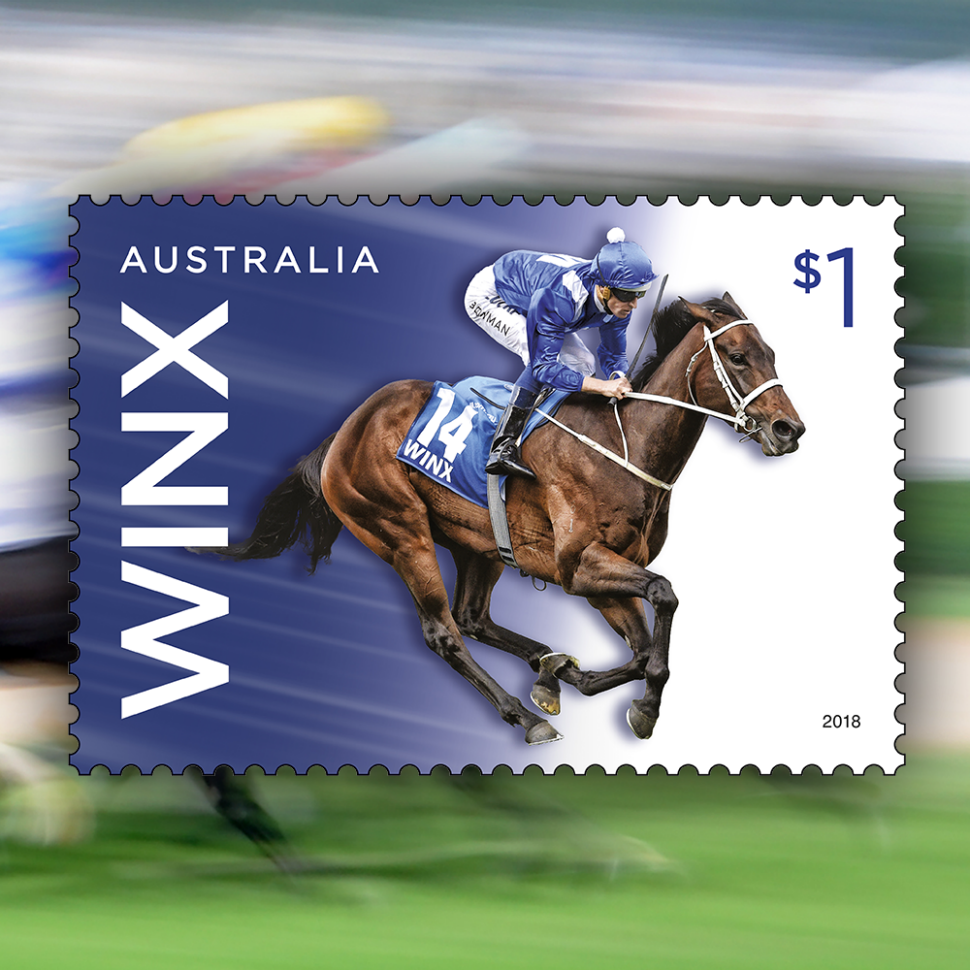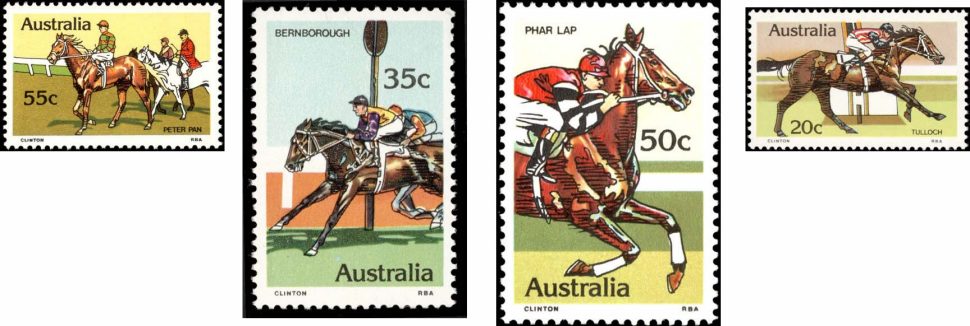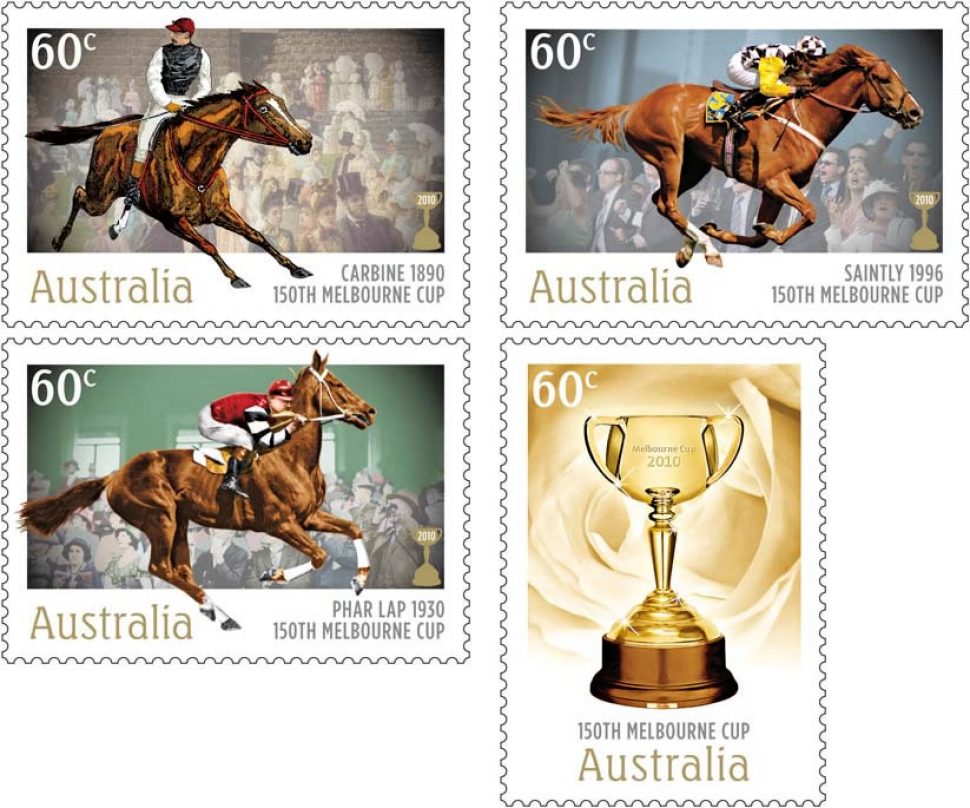The 1960 five pence (5d) stamp issued to mark the 100th running of the Melbourne Cup involved considerable controversy. The suggestion to honour the event came from the Victoria Racing Club. After some resistance associated with concerns about gambling, the Post Office agreed to a stamp.
When the Melbourne cup stamp was issued, there were the expected objections and some religious leaders even called for the stamp to be withdrawn from sale or for public boycotting.
The stamp was designed by Frank Manley, who had recently retired as chief artist/engraver at the Note Printing Branch and had joined the Post Office’s Stamp Advisory committee.
Manley’s design depicted Archer and jockey John Cutts (the winning combination of the first two Cups), and a representation of the race trophy.
The 1978 Horse Racing stamp issue featured four famous racehorses, including Phar Lap and Peter Pan, chosen in consultation with racecaller Bill Collins OAM (1928-1997). The stamps were the first to be designed by Brian Clinton, one of Australia’s most prolific stamp designers.
Perhaps the most legendary and charismatic horse in Australian racing, Phar Lap won the 1930 Melbourne Cup. Starting the race as an 11/8 favourite, he became the shortest priced winner in the Cup’s history.
Peter Pan won in 1932 after almost falling and would also win the 1934 Cup in particularly poor weather by three lengths. The jockey in 1934 was Darby Munro, who was depicted on the 22c stamp in the 1981 Sports Personalities issue. Munro also rode Cup winners Sirius (1944) and Russia (1946).
The 1978 Horse Racing stamps proved popular with the racing fraternity and supplies of 35c, 50c and 55c stamps were inadequate necessitating a reprint of all three (it's unusual for non-definitive stamps to be reprinted).
Following the launch of Australia’s Racing Hall of Fame in 2001, Australia Post issued Champions of the Turf in 2002, comprising five 45c stamps featuring horses that were inducted into the Hall of Fame that year: Wakeful, Rising Fast, Manikato, Might and Power and Sunline. The stamp illustrations, the work of Otto Schmidinger, depicted different moments in a race, and convey the speed, colour energy and atmosphere of a race meeting.
Two of these horses were Melbourne Cup winners, these being Rising Fast and Might and Power. In 1954 Rising Fast won the Caulfield Cup, the WS Cox Plate and the Melbourne Cup, making it the only horse in race history to win the treble in the same year.
The 2007 Australia Post Australian Legends celebrated six greats of horse racing – Scobie Breasley AM, Bart Cummings AM, Roy Higgins MBE, Bob Ingham AO, George Moore OBE and John Tapp OAM.
Bart Cummings (the “Cups King”) trained an astounding 12 Melbourne Cup winners – Light Fingers (1965), Galilee (1966), Red Handed (1967), Think Big (1974 and 1975), Gold and Black (1977), Hyperno (1979), Kingston Rule (1990), Let’s Elope (1991), Saintly (1996), Rogan Josh (1999) and Viewed (2008).
Jockey Roy Higgins rode two Melbourne Cup winners – Light Fingers (1965) and Red Handed (1967). Light Fingers is depicted on one of the two 2007 Legends stamps issued for Higgins.
With the 2010 150th Melbourne Cup stamp issue, three Cup winners have been honoured, two of them never having appeared on a stamp before – Carbine (1890), Phar Lap (1930) and Saintly (1996).
Phar Lap’s bloodline can be traced back to Carbine through both his sire (father) and dam (mother). Although Saintly was one of 12 Cup wins for Bart Cummings, the horse is the trainer’s most beloved.
This article was produced at the time of publication and will not be updated.
You might also like









